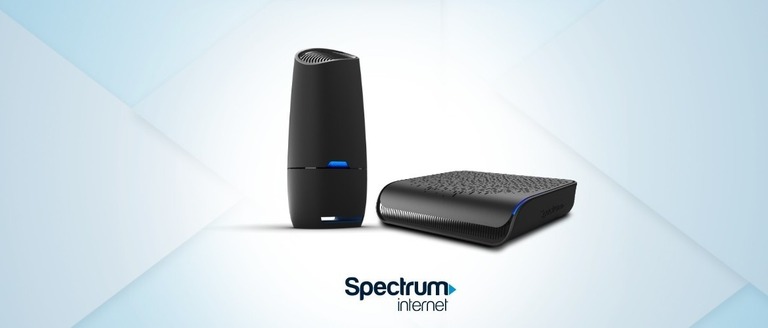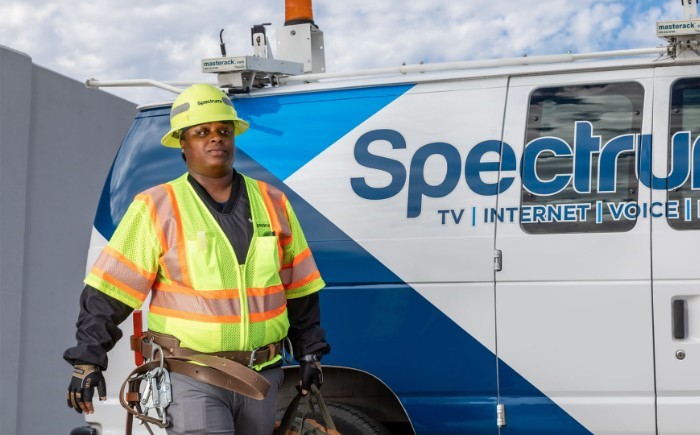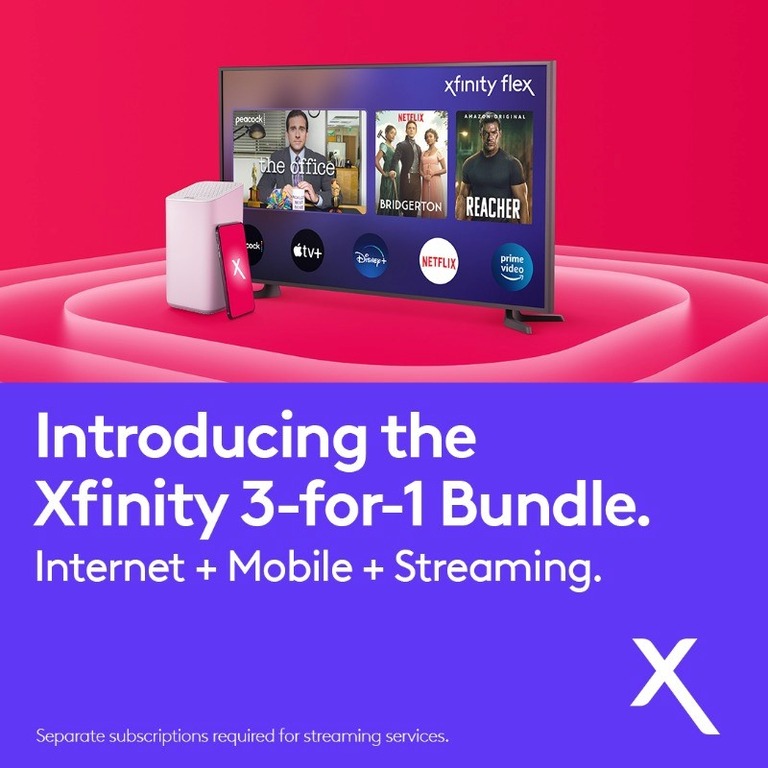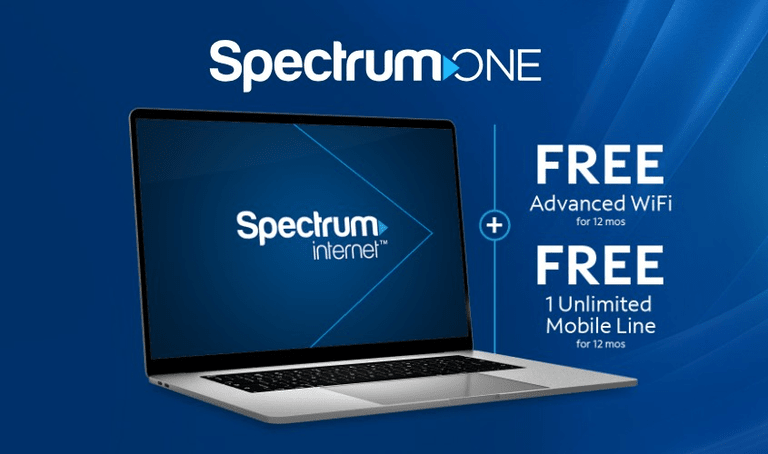Xfinity Internet and Spectrum Internet are two popular internet service providers across the United States. Unlike Google Fiber or AT&T, these two ISPs are known for their wide network availability. So, regardless of whether you live in an urban or rural area, you might have reliable access to either of these providers.
But, if it comes between these two, which should you pick? Let’s see which is the better ISP among Spectrum and Xfinity.
Xfinity vs Spectrum: The Better ISP
Xfinity is the better ISP if you want to reduce costs by tolerating a data cap and speed. However, Spectrum is the better choice if you need unlimited data and do not mind a heavy initial investment. Both these offer high-quality internet service, nevertheless.
Xfinity vs Spectrum: Plans and Pricing
Without further ado, I’ll compare plans and pricing for Xfinity and Spectrum.
Xfinity Plans and Pricing
Here’s the pricing information of Xfinity plans from the Central division.
Package | Price | Speed | Contract Length |
|---|---|---|---|
Connect | $20.00/mo. | 75Mbps | 12 months |
Connect More | $35.00/mo. | 200Mbps | None |
Fast | $55.00/mo. | 400Mbps | 24 months |
Superfast | $70.00/mo. | 800Mbps | 24 months |
Gigabit | $80.00/mo. | 1,000Mbps | 24 months |
Gigabit Extra | $85.00/mo. | 1,200Mbps | None |
Gigabit X2 | $120.00/mo. | 2,000Mbps | None |
Here are a few things to note for all these plans:
- No term contract
- Includes $10/mo. autopay/paperless billing discount
- Taxes not included.
Spectrum Plans and Pricing
Spectrum has what we consider a straightforward pricing plan.
Package | Price | Speed | Contract Length |
|---|---|---|---|
Spectrum Internet® | $39.99–$49.99/mo. | Up to 300Mbps | 12 months |
Spectrum Internet® Ultra | $49.99-$69.99/mo. | Up to 500Mbps | 24 months |
Spectrum Internet® Gig | $59.99-$79.99/mo. | Up to 1,000Mbps | 24 months |
The contract options may incur taxes and surcharges. They also need to be bundled.
Let’s do some analysis now.
As it’s obvious, Xfinity offers better basic plans. When you think about it, when you pay $20 per month, you get a connection with 75Mbps speed. However, you must remember that there is a contract length of 12 months. On the other hand, Spectrum Internet Assist will cost almost $5 more monthly and only gives you 50 Mbps of speed. But you are not bound by any contract.

But things become different when you go for a higher-speed plan. Let’s consider the 700Mbps plan from Xfinity. This one will set you back at $70 per month, and you have to be in the contract for 24 months. On the other hand, to get close to 1000Mbps of speed from Spectrum, you only have to pay less than $80 per month and still do the same 24 months.

So, if you are going for a Gigabit internet connection, choosing Spectrum over Xfinity or vice versa does not make a huge difference. But you need to consider other things, such as data caps.
Xfinity vs Spectrum: Data Caps
You should be concerned about data caps if you plan to do many media or game downloads. It also depends a lot on how many users are in your place. For instance, if five people actively use the internet, data gaps such as 500 GB or something may not cut it.
With Xfinity plans, you almost always have a monthly data gap of 1.2 TB. If you go past this, you can pay an additional amount per 50 GB. However, with Spectrum Internet, you do not have to worry about data gaps because all internet plans come with unlimited data.
So, here’s how the reasoning goes:
You might save some money while choosing Xfinity over Spectrum for low-speed plans. But you must pay extra if you ever go over the data caps.
I would always go for the unlimited data option if I were you.
Xfinity vs Spectrum: Additional Costs
There is also this aspect of additional costs. As much as we hate it, you may have to pay extra fees for installation and maintenance. Here is a quick rundown of how Xfinity and Spectrum do it.
Xfinity Internet
With Xfinity, you must pay an equipment fee of $14 per month. In addition, when it comes to installation, there is a professional installation fee of $39.99. But you can always go for the self-installation option with standard shipping charges.
As I said, if you go overboard with the 1.2 TB data cap, you can purchase 50 GB of data for $10. Similarly, if you want to eliminate the data cap, you can pay $30 per month.
Wondering what this means? Even if you go for the base-level 75Mbps plan, you have to pay $34/month.
The xFi Wireless Gateway from Xfinity offers Wi-Fi connectivity like a breeze. But you always have the option to use your own router.
Spectrum Internet
With Spectrum Internet, you have a relatively straightforward system. You do not have to pay for the modem or gateway for the basic plans. It is included in the monthly rental. But you will have to purchase a Wi-Fi router on your own. You can also get a Wi-Fi router for $7 a month.
And if you are going for the gigabit plan, you don’t even have to do that because the Wi-Fi router is included. Then, if you want to expand Wi-Fi coverage across your home, you can get Wi-Fi ports for $3 a month.
You have to pay $59.99 for professional installation. Even if you want to self-install the setup, you have to pay $24.99 for service activation. Spectrum charges a whopping $49.99 for the Wi-Fi board installation. In addition, there is a $10 service activation fee as well.
Cost Category | Xfinity Internet | Spectrum Internet |
|---|---|---|
Installation Fee | Up to $89.99 (Professional Installation) | Up to $49.99 (Professional Installation) |
Free (Self-Installation Kit) | $24.99 (Self-Installation Kit) | |
Modem/Router Rental | $14.00/month | $5.00/month (WiFi) |
Data Overage Charges | $10.00 per 50GB (after 1.2TB data cap) | No data caps, no overage charges |
Early Termination Fee | Up to $230 (if on a contract) | No contracts, no early termination fees |
Let me explain this in simpler terms:
Essentially, you must pay an additional amount to set up spectrum internet for the first time. However, you can forget about additional costs when you use it for the long term.
On the other hand, whereas Xfinity Internet does not charge you for the installation or setup fees, it will put a substantial rental fee on you for a more extended period. You also have to deal with the data caps.
Xfinity vs Spectrum: Availability
Here’s a quick look at the availability of Xfinity Internet and Spectrum Internet.
Aspect | Xfinity | Spectrum |
|---|---|---|
Market Share | Slightly larger portion of the cable internet market | Large portion of the cable internet market |
Regional Overlap | Massachusetts, Florida, Georgia | Massachusetts, Florida, Georgia |
Primary Coverage Areas | Maine, Virginia, Washington, DC, Pennsylvania, Tennessee, Georgia (mainly Atlanta), Florida, Indiana, California | North Carolina, South Carolina, Kentucky, Ohio, New York, Maine |
City-Specific Coverage | Seattle, Portland, Tucson, Las Vegas, Houston, Chicago | Scattered chunks in California, Texas, Florida, and several other states |
Coverage Focus | Specific cities rather than statewide | More regional, mainly in Eastern and Central time zones |
State-wise Coverage of Xfinity
- Washington
- Oregon
- California
- Idaho
- Nevada
- Utah
- Arizona
- New Mexico
- Colorado
- Wyoming
- Montana
- North Dakota
- South Dakota
- Nebraska
- Kansas
- Oklahoma
- Texas
- Minnesota
- Iowa
- Missouri
- Arkansas
- Louisiana
- Wisconsin
- Illinois
- Mississippi
- Michigan
- Indiana
- Kentucky
- Tennessee
- Alabama
- Georgia
- Florida
- South Carolina
- North Carolina
- Virginia
- West Virginia
- Maryland
- Delaware
- Pennsylvania
- New Jersey
- New York
- Connecticut
- Rhode Island
- Massachusetts
- Vermont
- New Hampshire
- Maine
State-wise Coverage of Spectrum.
- Hawaii
- Washington
- Oregon
- California
- Idaho
- Nevada
- Arizona
- Montana
- Wyoming
- Colorado
- New Mexico
- Texas
- North Dakota
- South Dakota
- Nebraska
- Kansas
- Oklahoma
- Minnesota
- Iowa
- Missouri
- Arkansas
- Louisiana
- Wisconsin
- Illinois
- Michigan
- Indiana
- Ohio
- Kentucky
- Tennessee
- Mississippi
- Alabama
- Georgia
- Florida
- South Carolina
- North Carolina
- Virginia
- West Virginia
- Maryland
- Delaware
- Pennsylvania
- New Jersey
- New York
- Connecticut
- Rhode Island
- Massachusetts
- Vermont
- New Hampshire
- Maine
As you can guess, these lists do not mean that Xfinity and Spectrum have entire-state coverage. So, whether you can get these ISPs depends on your region.

Both Xfinity and Spectrum are available widely across the US. However, their areas of focus are different. It thus makes sense to choose a provider based on your area first. But, if your area has both ISPs, you can look at other aspects and pick between Spectrum and Xfinity.
Xfinity vs Spectrum: Installation
Both these ISPs offer professional and self-installation options.
You can go for professional installation if you want a convenient setup.
But if you are looking forward to saving money, you can always use the self-installation option.
In the case of Xfinity, you can get the self-installation option for free, and the setup package will contain all the instructions you would need for the setup. But professional installation is outright expensive.

On the other hand, Spectrum warns you to pay almost $25 even when opting for self-installation. However, as far as the professional installation is concerned, both are to the point, and there is a high customer satisfaction rate for both ISPs.
Xfinity vs Spectrum: Customer Service
Both Xfinity and Spectrum are reputed for their supportive customer care. You can contact the customer service team for anything, starting from installation, for the issues you come across while using the internet.
But I would like to point out something else: the broader availability of documentation. So, the next time you encounter any issue, you can go to the tutorial knowledge base of these ISPs and find very well-explained solutions.

But if those do not work, you always have the option to get in touch with the customer team through telephone or live chat.
I also noticed that these ISPs have optimized their services to be managed through the dedicated application. So, what happens is that you have better control over what things could go wrong.
In my experience, the Spectrum app has efficiently managed most of the difficulties encountered using an internet service.
Xfinity vs. Spectrum: Best TV and Internet Bundles
If you want the convenience of managing all your connections from one place, you might want to go for TV or mobile bundles with Xfinity and Spectrum. We will quickly look at your options in this respect.
Xfinity TV and Internet Bundles
The best TV and internet bundle from Xfinity is called Xfinity Standard + Double Play. You can get this bundle for $79.99; the plan offers up to 200 Mbps of speed. Depending on the region, you may have a data cap, but it will mostly be 1.5 TB. You get 125 channels in this package.

If you are willing to pay more for extended speed, you can also go for Xfinity Super-Fast Internet + Popular TV, which will give you up to 800Mbps speed and the same number of channels. The cost will set you back at $149.60 when you enroll for it with a 1-year term contract.
With all these plans, you must pay a TV broadcasting fee of $17.
Spectrum TV and Internet Bundles
Spectrum Internet is not big when it comes to TV and Internet bundles. You do not get a discount when you bundle these services. But you will have the convenience of managing both from the same account. For instance, your cheapest option will be Spectrum Internet + TV Select.

This package offers you only 300 Mbps speed and offers 155+ channels. But you will have to pay $119.98 per month for this package. Even then, you must add the broadcast TV service charge, which will cost $21. So, it is going to be an expensive ordeal.
Therefore, you are better off avoiding TV + Internet bundles if you go for Spectrum Internet.
Frequently Asked Questions
Depending on the plan and contract, Spectrum may raise prices after 12 prices. However, you can prevent it by choosing a plan with an extended price guarantee.
In ideal situations where disruptions don’t exist, you get the maximum speed of 1200Mbps with Xfinity. But, cable and hybrid internet are prone to environmental issues.
If you go for the least expensive plan, your average Xfinity bill will be $34. This includes the plan cost ($20) and the equipment rental fee ($14).
The Final Call
I will summarize the core ideas into two statements. You can use these insights to pick between Xfinity and Spectrum in your area.
If you are looking for high-speed internet and do not mind paying an additional amount during the initial setup, you can go with Spectrum Internet. It also offers unlimited data, which could suit professionals and high media consumption.
On the other hand, if you want to keep your bills as low as possible but obliquely with compromising speeds, I recommend going for Xfinity Internet. It can cut costs by offering an all-in-one system, where you do not have to pay extra for the Wi-Fi router.
